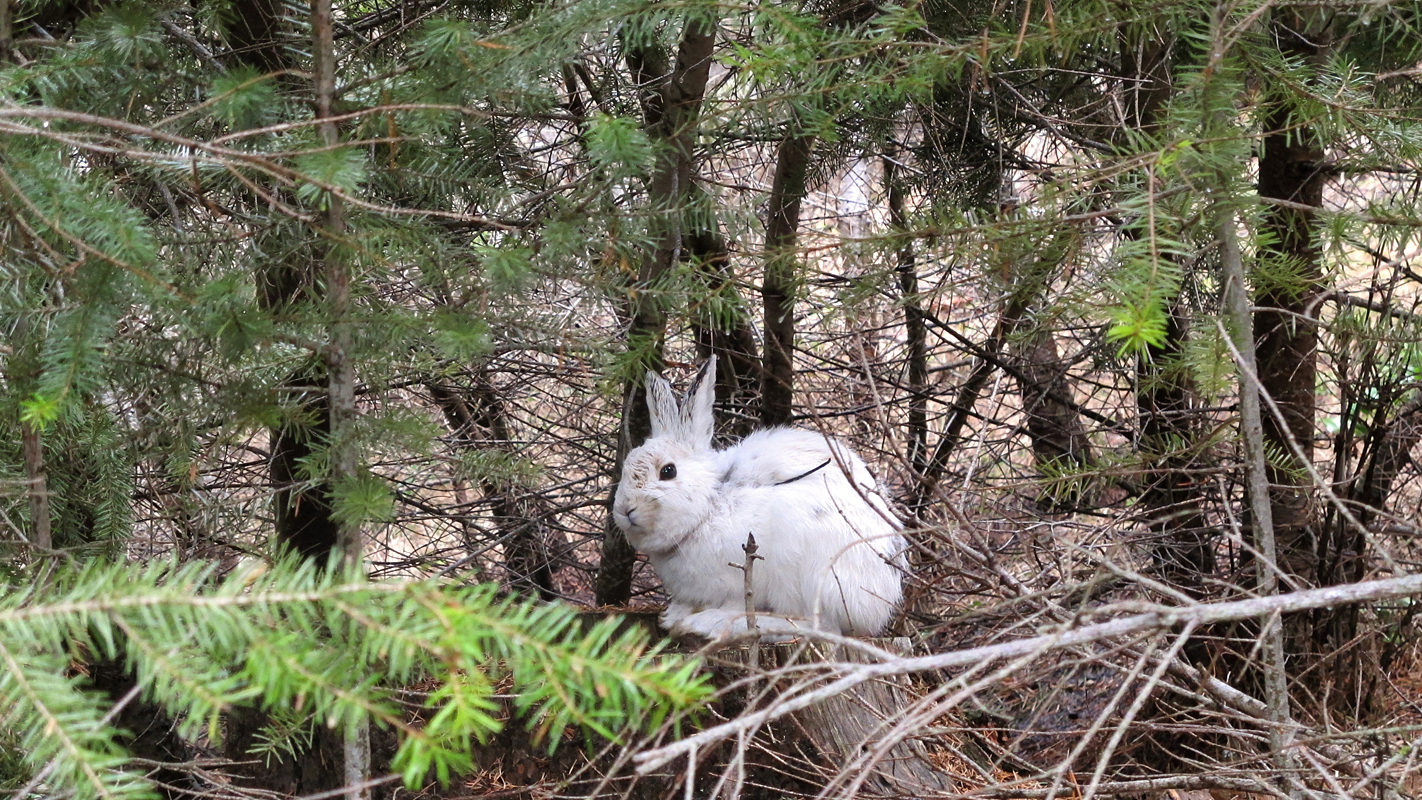Evolutionary Clock Ticks for Snowshoe Hares Facing Climate Change

For Immediate Release
Snowshoe hares that camouflage themselves by changing their coats from brown in summer to white in winter face serious threats from climate change, and it’s uncertain whether hare populations will be able to adapt in time, according to a North Carolina State University study.
Based on field research with radio-collared snowshoe hares in Montana, mismatched snowshoe hares suffer a 7 percent drop in their weekly survival rate when snow comes late or leaves early and white hares stand out to predators like “light bulbs” against their snowless backgrounds.
“This is one of the most direct demonstrations of mortality costs for a wild species facing climate change,” says L. Scott Mills, professor at NC State’s College of Natural Resources and study co-author. “In previous research we showed that climate change is causing snow duration to decrease, and that hares have little ability to adjust their molt timing or behaviors to compensate for the mismatch. Here we take the next step of showing that mismatch does indeed kill.”
“This paper shows that the mismatch costs are severe enough to cause hare populations to steeply decline in the future unless they can adapt to the change,” says Marketa Zimova, lead author of the journal article in Ecology Letters and doctoral student with Mills at NC State.
The good news for snowshoe hares is the finding that different individuals molt at different times, enabling natural selection to favor those better suited for the changing snow conditions. However, whether evolution through natural selection can save hares quickly enough is uncertain, especially given the rapid rate of change.
“Ultimately, to promote species persistence in the face of climate change induced mismatch, the reduction of its cause is essential and must be done via climate change mitigation,” Zimova says. “But in the meantime, we should maintain large and connected populations to foster evolutionary rescue and its ability to allow wild animals to adapt to the changing conditions.”
Camouflage mismatch has the potential to impact at least 14 species worldwide that change coat colors seasonally, Mills says. His team of researchers is expanding the coat color research to other species globally, including mountain hares, white-tailed jackrabbits, weasels and arctic foxes.
Mills received funding for this research from the National Science Foundation’s Division of Environmental Biology (Grant 0841884), the U.S. Geological Survey National Climate Change and Wildlife Science Center, and the Bureau of Land Management (Missoula Field Office). Zimova received funding from the U.S. Department of the Interior’s Southeast Climate Center and NC State University. Co-author Josh Nowak is a research scientist at the University of Montana.
– ford –
Note: An abstract of the paper follows.
“High Fitness Costs of Climate Change Induced Camouflage Mismatch”
Authors: Marketa Zimova and L. Scott Mills, NC State University, and J. Nowak, University of Montana
Published: Ecology Letters
Abstract: Anthropogenic climate change has created myriad stressors that threaten to cause local extinctions if wild populations fail to adapt to novel conditions. We studied individual and population-level fitness costs of a climate change-induced stressor: camouflage mismatch in seasonally colour molting species confronting decreasing snow cover duration. Based on field measurements of radiocollared snowshoe hares, we found strong selection on coat colour molt phenology, such that animals mismatched with the colour of their background experienced weekly survival decreases up to 7%. In the absence of adaptive response, we show that these mortality costs would result in strong population-level declines by the end of the century. However, natural selection acting on wide individual variation in molt phenology might enable evolutionary adaptation to camouflage mismatch. We conclude that evolutionary rescue will be critical for hares and other colour molting species to keep up with climate change.
- Categories:


